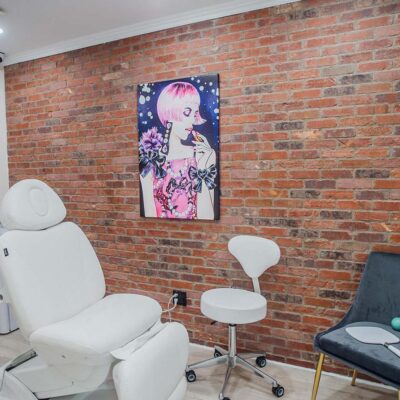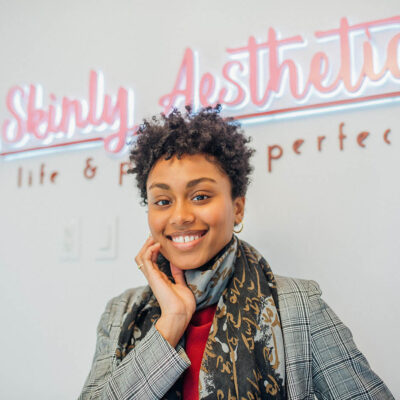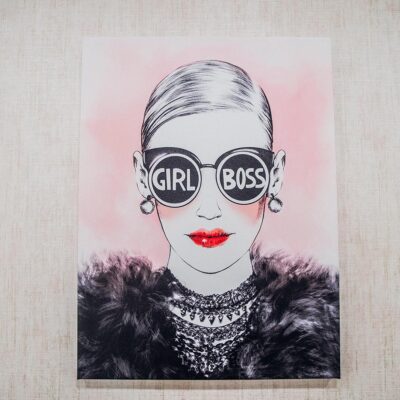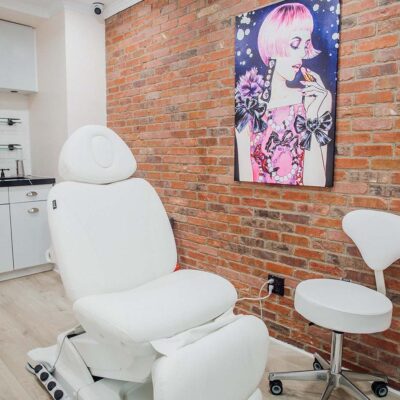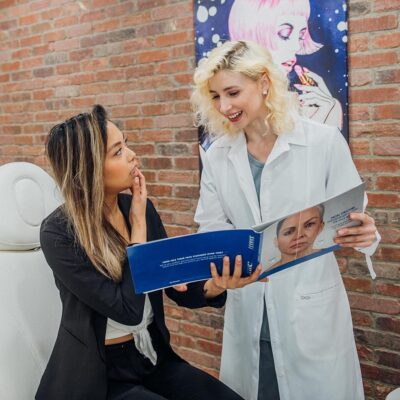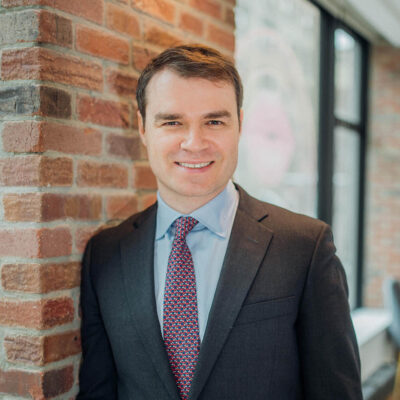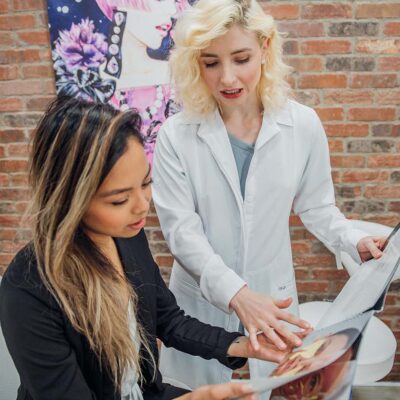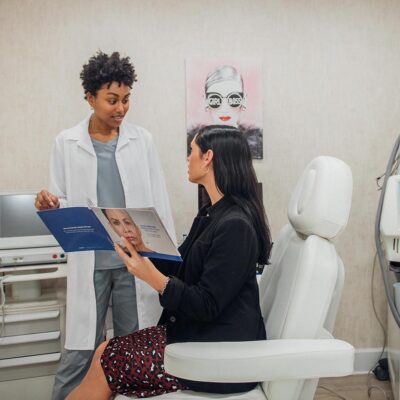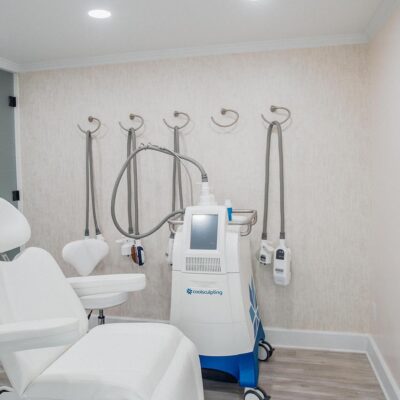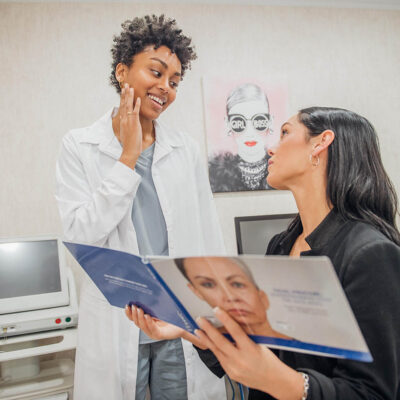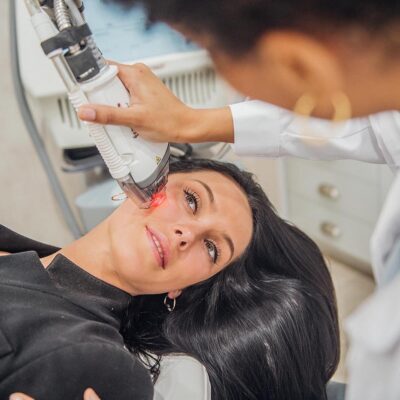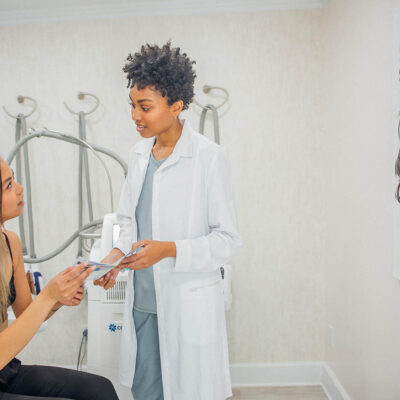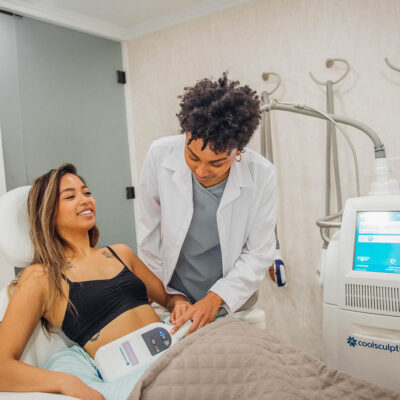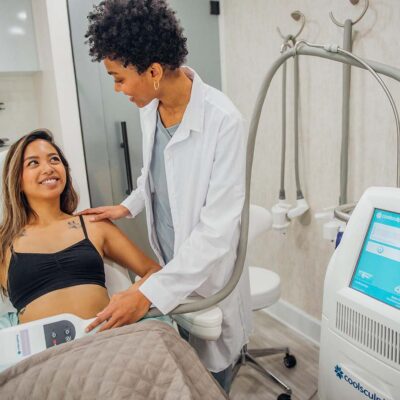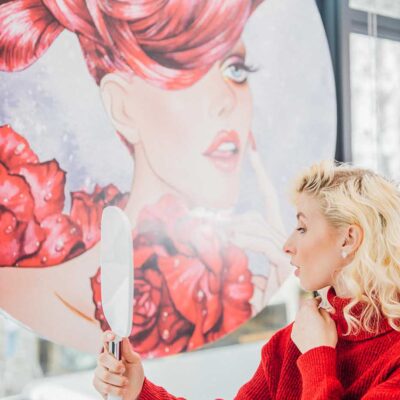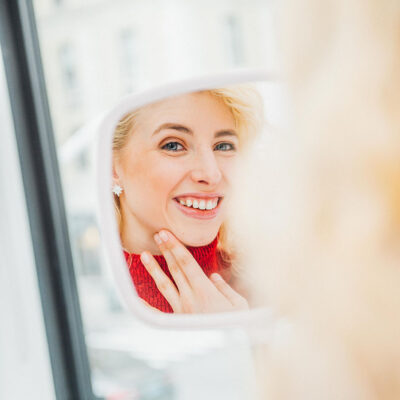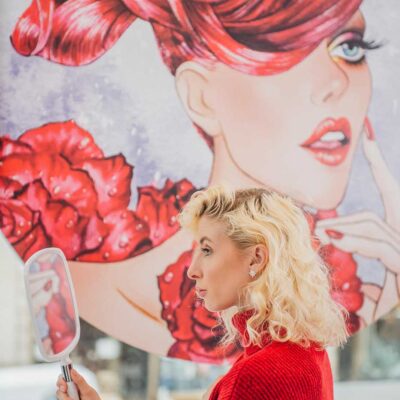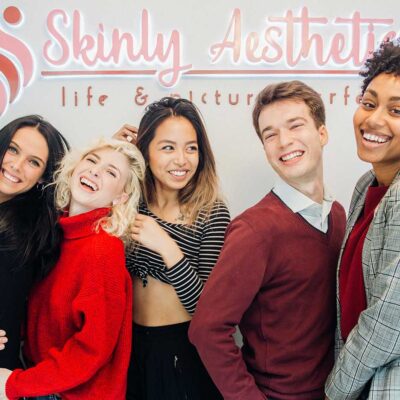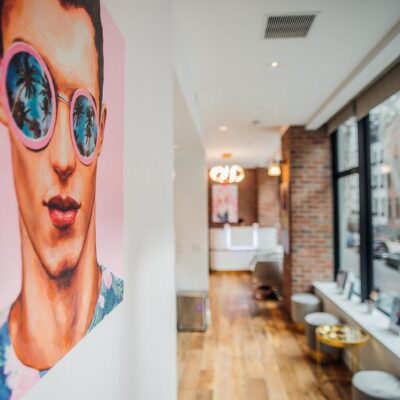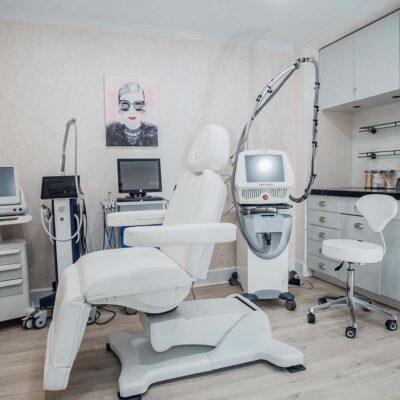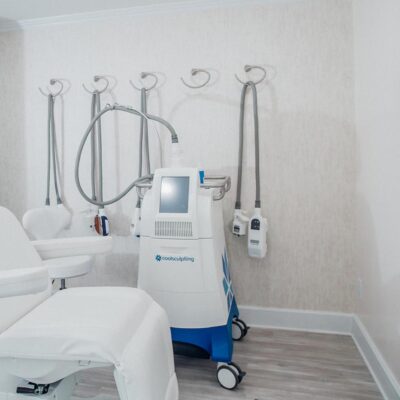Within the last ten years dermal fillers have gained great popularity as a skin rejuvenation technique. With aging our faces normally lose their own natural collagen and hyaluronic acid which results in fat loss from such areas as the under eyes and cheeks. Once the volume is lost we tend to look older and gaunt. The loss of fatty tissue volume in the cheeks is among those signs that immediately give away our age. This is the reason why dermal fillers have become so highly demanded to treat the hollowness in the face. There is a variety of hyaluronic acid based NYC fillers that are designed to restore the volume in the mid face and cheeks. Juvederm is one of them particularly popular for filling in the hollowness in the mentioned areas of the face. Juvederm Voluma is a smooth hyaluronic acid gel which works perfectly in the mid face and cheeks. After examining the mid cheek dermal fillers before and after photos you will know the exact reason why this minimally invasive option has taken over the position of its surgical competitor. Dermal fillers are a popular and highly demanded tool when it comes to minimally invasive face augmentation, especially in the midface and cheek area. There are lift sagging cheeks fillers that replace a cheek augmentation surgery. Being one of the best injectors in NYC, Dr. Schwarzburg mostly uses hyaluronic acid dermal fillers to volumize the cheeks that have lost collagen and hyaluronic acid as a result of the natural process of aging. Juvederm, Juvederm Voluma, Restylane, Radiesse, and Sculptra are among the most famous cheek filler face lift products.
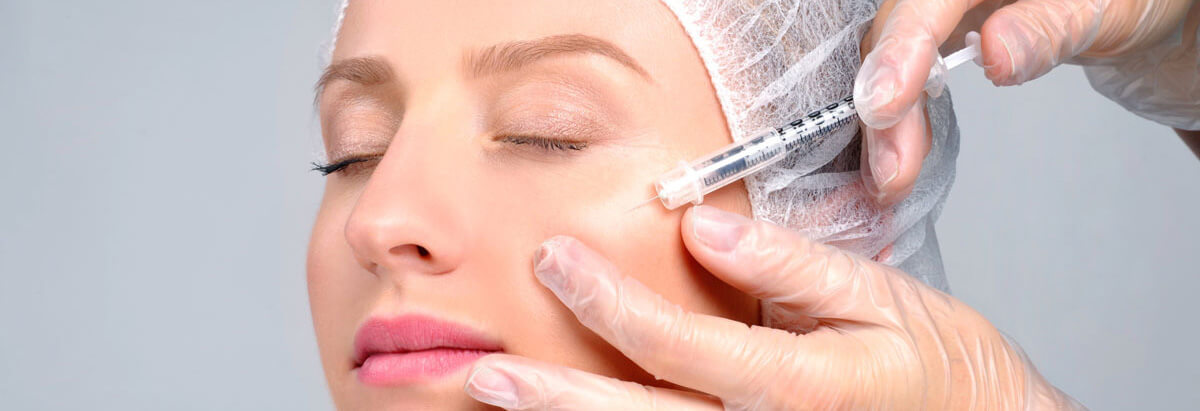
Juvederm Cheek Injections
In 2006 Juvederm got an FDA approval to treat fat and volume loss in the midface and other areas of the face and neck. Besides, it can also serve the purpose of filling in deep lines and folds, like the nasolabial folds, which are a consequence of collagen loss. Another application of Juvederm is adding volume to such areas as the lips, jaw, and chin. The technique of the injectable dermal filler is absorbing water in the area surrounding the injection site, creating volume and stimulating the production of healthy skin cells. As mentioned above, facial fat loss can be a result of the aging process, however there are other factors, e.g. weight loss, illness, and genetics, that can contribute to it.
Not only does Juvederm Voluma injectable filler increase the volume of the targeted area, it also has a lifting effect as a bonus, meaning apart from addressing wrinkles, folds, and hollowness in the face, it results in an overall rejuvenation and refreshment of the skin. For facial rejuvenation purposes the method of dermal fillers is often preferred over invasive surgical procedures, like cheek implants New York. The surgical procedures imply additional risks, side effects and downtime which is not the case with fillers. Juvederm products are designed and produced by Allergan – the same company that also manufactures Botox.
Juvederm Voluma is particularly popular for cheek enhancements, however other Juvederm products like Juvederm Volbella for cheeks, Juvederm Ultra XC, and Juvederm Volbella can alsos serve the purpose of increasing cheek volume and adding definition to the cheekbones. Your very own cheek augmentation before and after photos will be proof of your fuller and more youthful cheeks. Juvederm fillers in New York are also used for several other parts of the face to restore or add volume.
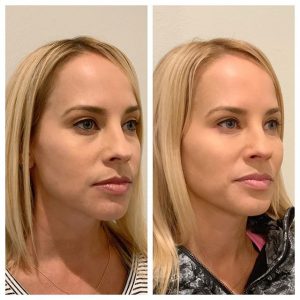
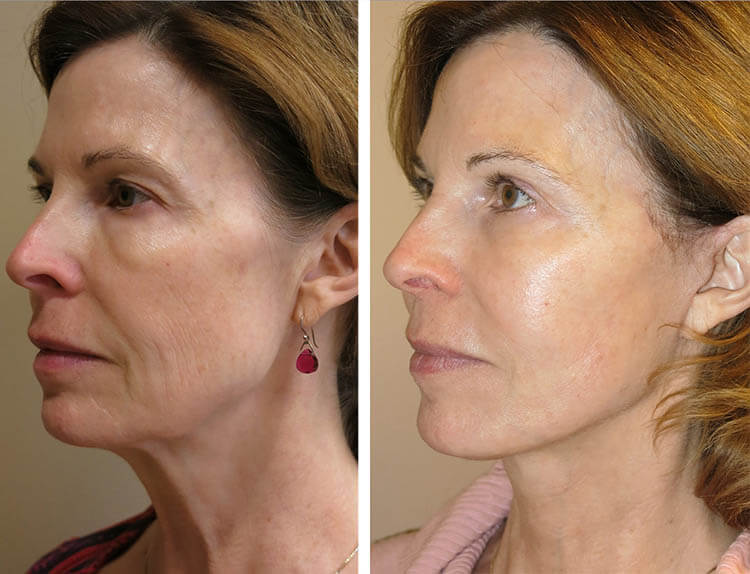
Juvederm Voluma for the Cheeks
Juvederm Voluma is particularly designed to address the loss of facial tissue associated with aging. Hollow cheeks, under eyes, fine lines, and wrinkles are among the consequences of tissue loss, all of which can be treated by Juvederm Voluma. It also has the added benefit of a lifting effect and is known to last longer than most fillers, with results that remain even for two years, when the effect of other dermal fillers lasts for a maximum of a year. However, the latter can be ideal for other treatment areas. Juvederm Voluma injections carry out additional lifting function, addressing the saggy skin which is usually caused by collagen and hyaluronic acid loss throughout the aging process,
Which One Is a Better Option: Juvederm Voluma or Sculptra for the Cheeks?
We will do no justice to any of the fillers if we name the other one better functioning. Each of the fillers has its own advantages when it comes to cheek injections. Sculptra injections in the cheeks tend to last longer than the Juvederm Voluma ones. However, Juvederm Voluma is based on hyaluronic acid, thus it is dissolvable, meaning you can easily undo it if you find that cheek enhancements do not suit you. Sculptra results usually last for up to 3-4 years: this can be viewed as an advantage, or a shortcoming. The technique of Sculptra is based on boosting the body’s own collagen production which expands the volume of the treated area over the time. If you have chosen Sculptra as your fuller cheeks filler, then make sure to have the procedure administered by a board certified plastic surgeon or dermatologist, taking into consideration that the expansion of Sculptra can not be fully controlled. It depends on the injector whether your cheeks will produce just the right amount of collagen. In case the amount of produced collagen is more than expected, it will give the cheeks an overfilled look which will stay with you until the filler wears off, as it is not dissolvable.
Sculptra Injections for the Cheeks
The initial purpose of Sculptra production was treating fat loss in the faces of HIV positive patients. Now it is widely and commonly used to add volume to factual tissue or buttocks among the general public. Sculptra injections use Poly-L-Lactic acid and boost the body’s own collagen production. The collagen wraps around particles in the body that would typically break down, as a result the treatment area grows over time. The most common applications of Sculptra are in the cheeks, as well as in the buttocks. The one thing that you need to keep in mind when choosing Sculptra for the enhancement of your cheeks is that it is not dissolvable. This is the reason why Dr. Schwarzburg is more prone to use hyaluronic acid based fillers in the face, as they are easier to manage and control, especially when it comes to the amount of volume that is placed in the area of treatment. Sculptra cheek augmentation is not encompassed in a single session ordeal. It usually takes one to two months for the treatment area to expand, as Sculptra works by increasing collagen production. This is why two to three Sculptra sessions may be needed for your desired results with an injection of a single vial per session.
What Shall I Expect from Juvederm Voluma in the Cheeks?
The basic difference between Juvederm Voluma and Juvederm Voluma XC is that the latter has a small percentage of lidocaine in its composition which lessens the discomfort of the overall injection process and makes the treatment experience more tolerable, lidocaine being a local anesthetic. A small amount of lidocaine is present in all the XC Juvederm products. Apart from that, 15 – 20 minutes prior to the procedure Dr. Schwarzburg typically applies a local anesthetic, lidocaine, on the treatment area to prevent additional discomfort.
When Juvederm Voluma is injected into the cheeks, you can expect more volume in the cheek area as well as an improvement in fine lines and wrinkles that were previously visible on the cheeks. Cheek filler is often paired with an under eye filler as these two facial areas go hand in hand. One can use Juvederm fillers for the under eyes, however Restylane products are more common for filling the hollowness in that area. Restylane is manufactured by Galderma – the same company which is responsible for Dysport as well.
If you have low pain tolerance then Juvederm Voluma XC may be a little more tolerable for you. This is because Juvederm Voluma XC contains small amounts of lidocaine which is responsible for making the overall treatment less painful. The results achieved by Juvederm Voluma injections are expected to last for up to two years – this is almost double the longevity of the majority of hyaluronic acid based fillers.
After the injection of Juvederm Voluma into the cheeks, the volume in the cheek area will increase, and there will be an improvement in the appearance of fine lines and wrinkles previously visible on the cheeks. The combination of a cheek filler and an under eye filler is common as these two areas go hand in hand.
Radiesse Injections in the Cheeks
The dermal filler Radiesse is known to produce very natural results with minimal side effects as it is based on calcium hydroxyapatite. Right after the injection Radiesse stimulates the body’s own collagen production in the area of treatment. With Radiesse the volume increase is instantaneous, however it does not stop then and there; the injected area will increase in volume over time because the collagen will continue to be produced. The longevity of the results depends on the peculiarities of body response, however the general average duration is anywhere from nine months to one year or longer.
The clinic of Dr. Schwarzburg is located on the Upper East Side of Manhattan, where he conducts personalized consultations with his clients. Every client goes through this one on one consultation with the doctor before the injection, so that the doctor is able to determine which filler is the most optimal for each individual patient. Radiesse can be chosen to add volume to the cheeks, address fine lines and wrinkles, meaning restore the lost volume that has created hollowness in different areas of the face. It is also popular for hand rejuvenation. Radiesse cheek filler is especially popular among those patients that desire to have more prominent cheekbones or somewhat more volume in the mid face area.
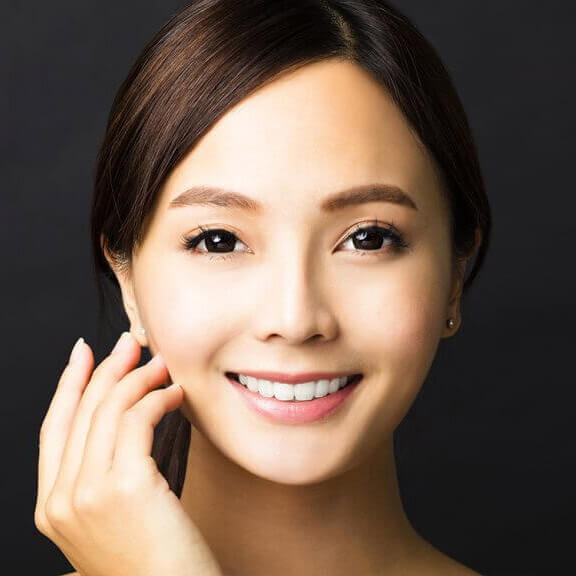
Cheek Fillers FAQs - Most Commonly Asked Questions
The Best Cheek Fillers
One can easily get confused when it comes to starting cheek treatment, as there are too many dermal fillers out there on the market. However, the filler needs to be chosen based on your desired result; only that way you will fully benefit from it. The majority of cheek fillers NYC are hyaluronic acid based, however there are some that are not. Below you can find a little guidance to some of the dermal fillers that Dr. Schwarzburg prefers to use for the cheeks.
- Juvederm
Juvederm is a dermal filler based on hyaluronic acid, designed to increase the volume of certain areas on the face and neck. Its technique is based on absorbing water (with the hyaluronic acid) in the treatment area, thus adding volume and resulting in an effect of fullness. Juvederm has several varieties of fillers, the most optimal of which for the cheeks being Juvederm Voluma. - Juvederm Voluma
Juvederm Voluma has got an FDA approval as a dermal filler developed specifically to treat the cheeks and mid face. It’s popular for the smoothness and longevity of its results, which can last for up to two years after the initial treatment. It is also possible to use Juvederm Voluma in other areas of the face, e.g. the nose, jaw, chin, and even lips, in case the patient wants a full look. - Restylane
Being a hyaluronic acid based filler Restylane is popular for the under eye injections. It can serve the purpose of replacing the lost volume under the eyes and in the cheeks, as well as filling in lines and wrinkles. Another common application of Restylane is filling in and eliminating deep folds, like the nasolabial folds and marionette lines, which start from the corners of the mouth and go down the chin. - Radiesse
Radiesse is a filler that stimulates natural collagen production through injection. Depending on the patient’s response, Radiesse may last up to one year or longer. Radiesse can be used to fill in lines and wrinkles as well as restore lost volume in hollow areas of the face. It is commonly used in the hands to rejuvenate and add volume as well. - Sculptra
Sculptra is a Poly-L-lactic acid solution that stimulates your own collagen production once injected. The collagen then accumulates around particles in the body not letting them break down, when they naturally would. As a result the treatment area gradually grows. The initial purpose of Sculptra was treating HIV positive patients, restoring the fullness of their faces that had lost a lot of volume. That’s how it got its FDA approval. And now it is widely used among the general public to give volume to the cheeks and buttocks.
How Long Do Cheek Fillers Last?
Cheek enhancements can last anywhere from 9 months to 3 years, depending on the type of product used. The results with Juvederm Voluma and Juvederm Voluma XC tend to last for up to 2 years after the treatment; this is a longer term than most other fillers offer. As for Sculptra in the cheeks, the effect may last even up to 3 or 4 years, depending on your body’s response to the procedure. When it comes to Radiesse, its results typically last up to 12 months. Neither Radiesse, nor Sculptra are hyaluronic acid based fillers, meaning hyaluronidase won’t be able to dissolve them.
Is It Possible to Dissolve Cheek Fillers?
In most cases cheek filler removal is possible, depending on the type of the product used. Actually, any hyaluronic acid based product can be dissolved with hyaluronidase, meaning the results are well-reversible in case you’re not satisfied with them. Hyaluronic acid based products tend to wear off in a matter of a few months to two years. Hence, you will need regular touch ups every few months or a whole new treatment once the product completely fades away. This might sound as a deal breaker for some, however because of how quick and easy the whole process is, without recovery time, risks or side effects, most people choose it over a surgical or more permanent procedures. As for Sculptra or Radiesse cheek filler, these are not dissolvable and you will need to wait until they wear off.
Can Men Get Cheek Fillers?
The answer to this question is absolutely positive. Men are exposed to signs of aging the same way women are, they also experience volume loss in the cheeks. Actually, one of the most common cosmetic procedures men tend to undergo is cheek augmentation in male patients, as the subtle difference achieved by the procedure can take years off of a person’s face.
Do Cheek Fillers Stretch Skin?
The purpose of any dermal filler injection in the face aimed to fill in the lost facial tissue volume is bringing back the fullness of the face. If administered by a professional injector, the chosen dermal filler will be injected only so as to fill in the hollowness, not to create the impression of extra fullness. If the procedure is carried out properly then the injection of a dermal filler into the cheeks has the capacity to address the laxity of the skin; this does not leave the consequence of a loose skin after the filler is dissolved. Only when too much product is used, the cheeks can be “overfilled” and possibly stretch out the skin.
How Do Cheek Fillers Rejuvenate the Face?
The process of volume increase is simple with hyaluronic acid based products, like Juvederm and Restylane. Hyaluronic acid is naturally present in the body; it carries the function of keeping the skin hydrated and plump. With aging we tend to lose collagen and elastin in our faces which creates hollowness and makes us look older. Hyaluronic acid has the capacity to restore the lost volume and it absorbs water in the treated area upon injection. Juvederm Voluma and Juvederm Voluma XC have the added benefit of Vycross technology which makes the skin more even and smoother, resulting in an overall youthful and rejuvenated appearance.
Those dermal fillers that are not hyaluronic acid based, like Sculptra and Radiesse, work in the cheeks by boosting collagen production, which is the protein in the body particularly responsible for skin laxity and firmness. As a result of collagen increase in the face, the facial tissue grows and the skin looks full, younger and firmer. Some patients prefer also getting cheek Botox to complement the results achieved with the filler as well as to eliminate fine lines and wrinkles around their crow’s feet for an overall smoother face.
Are Cheek Fillers Dissolvable?
Cheek fillers are dissolvable if the injected product is based on hyaluronic acid, e.g. Restylane or Juvederm. Hyaluronidase is the substance that dissolves the hyaluronic acid based dermal fillers, it actually breaks down hyaluronic acid once injected. As for Sculptra and Radiesse, these dermal fillers that mainly work through stimulation of collagen production in the body; neither one of them contains hyaluronic acid, hence they can’t be dissolved with hyaluronidase. And if the cheek enhancement product is not dissolvable and you want to get rid of the results, you will have to wait until the body metabolizes the product over time.
Do Cheek Injections Require Any Downtime?
No downtime is associated with cheek fillers, as this is a minimally invasive treatment. Make sure to take care of your facial skin with or without cheek fillers, so that it is calm and clear. It is not advisable to inject dermal fillers into the skin if the treatment area is irritated. With proper skin care you will be nicely surprised by cheek enhancement with fillers before and after results.
Just keep in mind that there might be some swelling and bruising after the treatment. In such cases you are advised to use an ice pack to reduce the swelling on the first day, and follow that with a warm compress and arnica gel on the second day up until the bruising subsides. To be on the safe side and to prevent swelling, avoid heat and exercise for 2 – 3 days after the session. In case you want to have another procedure on the area of treatment, it is best to wait for a month to be sure that the filler has properly settled and won’t be affected by other treatment procedures. The mentioned risks and side effects refer to all Juvederm injectables, just like any other hyaluronic acid based fillers, Scuptra, and Radiesse.
What Are the Side Effects of Cheek Fillers?
Being a minimally invasive injectable treatment cheeks fillers arise the possibility of very little side effects. Redness, bruising, discomfort, and swelling around the treatment area are some of the possible side effects. To prevent them, Dr. Schwarzburg makes sure to properly sanitize the treatment area before the injection. Besides that right after the treatment you will be given an ice pack to reduce swelling. It’s strictly recommended to avoid heat and exercise for two days after the procedure to prevent additional swelling. If there is any bruising on the day after the treatment start applying warm compress and arnica gel until the bruising subsides. Arnica gel is available in most pharmacies over the counter. Very rarely the injection may cause lumps and bumps in the treatment area. These lumps and bumps will either clear on their own within months or you can get rid of them by dissolving the filler or with steroid injections. It is of high importance to do your own research on your injector to make sure they are a board certified cosmetic surgeon or dermatologist.
How Does Restylane Lyft Compare to Juvederm Voluma as a cheek filler?
The purpose of both Restylane Lyft and Juvederm Voluma is to increase and replace the lost volume in the midface and cheeks, as well as other treatment areas. Both of their compositions are very much alike and perfectly increase the volume in the cheeks, fill in deep lines and folds, such as the nasolabial ones. The basic difference between Restylane Lyft and Juvederm Voluma is that the latter tends to last longer. The typical longevity of Restylane Lyft results is up to 18 months, while the results of Juvederm Voluma can last for up to two years. Besides, Restylane Lyft is also approved by FDA for hand rejuvenation purposes.
How Much Does A Non Surgical Cheek Augmentation Cost?
The average cost of a cheek filler can be anywhere from $800 to $2400 total. The price of cheek augmentation filler is mainly conditioned by the desired result of the patient, their facial structure and the number of syringes they need. If only one syringe is needed for your desired results then the price will be lower than if several syringes were needed. The cost of a dermal filler injection can also be affected by the geographical location of the clinic as well as the qualifications of the administering professional. If you aim at the elimination of the appearance of deep wrinkles, less syringes will be needed compared to treating severe hollowness in the eyes and cheeks. Apart from the mentioned factors, if you want to be treated by a board certified plastic surgeon, dermatologist, or other doctor, they will most likely ask for a higher price for cheek injections than a nurse practitioner or aesthetician at a medical spa. Cheek augmentation cost in metropolitan cities, like New York and Los Angeles is higher as the demand for such procedures is also higher than in suburban areas. Being one of the best injectors in NYC, Dr. Schwarzburg does his best to develop a treatment plan that will suit your physical and financial needs and expectations.
Do Cheek Augmentation Treatments Involve Pain?
Even if your level of pain tolerance is high, you will certainly feel somewhat uncomfortable when dermal fillers are injected into your cheeks. That feeling of discomfort is normal, you can even experience pain at certain moments. However, this experience is not so severe as to require anesthesia. There are patients who prefer applying ice packs to the treatment area prior to the procedure to numb the skin and reduce the level of discomfort. Dr. Schwarzburg has years of experience; being a skilled injector, he highly prioritized the comfort of his patients. That is why Juvederm Voluma XC is one his most favored products to use, especially when it comes to cheeks. Juvederm Voluma XC has lidocaine – a local anesthesia, in its composition which makes the entire process more bearable.
Is It Possible to Combine Dermal Fillers for Cheek Enhancement with Other Treatments?
It is normal to combine cheek augmentation dermal fillers with other dermal fillers as well as other treatments. Based on what results you want to achieve, Dr. Schwarzburg can combine a Juvederm cheek filler with a Restylane under eye filler as these two areas are interconnected. Besides, it is a good idea to pair your cheek filler injections with skin tightening treatments that complement the filler. Among those treatments we could name the Fraxel laser that addresses superficial layers of the skin and boosts collagen and elastin production through controlled damage done to the skin by heat; thus, it results in reduction or elimination of fine lines and wrinkles, sun spots, pigmentation, and sun damage. Another treatment that can complement a cheek enhancement procedure is Secret RF — a radiofrequency treatment that targets the SMAS layer of the skin and stimulates healthy cell regeneration and collagen and elastin production by heating the area of treatment. Secret RF has an overall tightening effect, lifts and firms the treatment area.
What Are Cheek Injections with Micro Cannulas?
This is a type of injection that uses the micro cannula technique. Cannula is a flexible, blunt ended hollow needle through which a channel is created to administer the dermal filler. If the dermal filler is administered through the cannula technique, firstly the skin is punctured with a fine needle to create an entrance for the cannula. Then the latter is horizontally inserted to deliver the product into the treatment area. Sometimes this technique is used for cheek enhancements with dermal fillers, as the blunt tip does minimal damage to the skin tissue during the process of injection. The usage of cannula can actually help avoid bruising or discomfort during the treatment; however, it has to be performed by a skilled injector. For optimal results either a very small and sharp tipped needle or a micro cannula may be used; this mainly depends on the type of the treatment and the targeted area.
Is It Necessary to Do Allergy Testing for Dermal Cheek Fillers?
There is no necessity to do allergy testing before any dermal filler administration for cheek enhancement. If you had allergic reactions before, then make sure to update your doctor on that in advance in order to confirm that you will benefit from the treatment and not come across an adverse situation.
Why Choose Dr. Schwarzburg for Your Cheek Enhancement?
Dr. Schwarzburg has a successful clinic on the Upper East Side of Manhattan and is a board certified expert in cosmetic medicine with several years of experience. Within the years of his practice Dr. Schwarzburg has worked with different patients and prioritizes meeting the individual needs of his patients through thoughtful pre procedural assessments and the use of best cheek filler techniques. His skillful expertise makes it possible for him to meet his patient’s expectations and at the same time keep the results safe and natural.
If you are interested in booking a consultation with Dr. Schwarzburg you can contact us at 212-920-7790 or email us at info@miraclefacemedspanyc.com.
When Is It Best to Have Cheek Fillers?
The age range from 30 to 54 is the most common for cheek enhancements. This procedure is basically for those who want to regain back the lost fat in their cheeks, to address the hollowness in the face and achieve a more youthful appearance. Even in their 20s people come to give more prominence to their cheekbones with fillers and to prevent the signs of aging with Botox. As for patients above 40, they are looking to rejuvenate their skin/face and address the aging signs that are already there.
Do Dermal Fillers Work for Men As Well?
Dermal fillers work for any healthy individual, male or female, by increasing their facial tissue volume, be it on the cheeks, lips, jawline, or any other area, provided they are a candidate for the treatment. Many are the men that come to Dr. Schwarzburg’s NYC medical spa to regain the lost tissue in the cheek area, as well as reduce fine lines and wrinkles. The different types of dermal fillers can also be complemented by Botox to improve the appearance of wrinkles and prevent their further formation.
Am I a Good Candidate for Cheek Augmentation NYC?
FDA has approved Juvederm, Restylane, Radiesse, and Sculptra as safe and effective fillers for cheek augmentation on any person who desires to give a fuller look to their cheeks. The majority of cheek enhancement patients are 25 or older, and yet there are cases when people even below that age get cheek fillers. The thing is that facial volume loss and hollowness is not only caused by age but also some other contributing factors, such as weight, lifestyle, and genetics. Facial fillers – be they based on hyaluronic acid, Poly-L-lactic acid or hydroxyapatite, can ideally serve their purpose for any healthy individual who wants to improve submalar hollowness in the midface and cheeks and give their cheekbone a more defined appearance. The cheek augmentation before and after results are proof of the notable difference one can achieve even with a small amount of dermal filler.
How Often Can I Undergo a Cheek Augmentation Procedure with Dermal Filler Injections?
The typical number of filler syringes one might need is from 1 to 4. This number varies from person to person. Dr. Schwarzburg has adopted the approach of starting with less filler rather than going for a full three syringes in one session. The reason for this is that there may be patients who respond particularly well to just one syringe, leaving out the necessity of additional filler. And in case the patient ends up needing more than that, it will be administered to them in a follow up appointment a week after the initial treatment. The longevity of the results mainly depends on the product injected; fillers basically last anywhere from 9 months to 2 years. Based on this timeframe, your next filler treatment is due when you metabolize the filler.
Contents
- 1 Juvederm Cheek Injections
- 2 Juvederm Voluma for the Cheeks
- 3 Which One Is a Better Option: Juvederm Voluma or Sculptra for the Cheeks?
- 4 Sculptra Injections for the Cheeks
- 5 What Shall I Expect from Juvederm Voluma in the Cheeks?
- 6 Radiesse Injections in the Cheeks
- 7 Cheek Fillers FAQs - Most Commonly Asked Questions
- 8 The Best Cheek Fillers
- 9 How Long Do Cheek Fillers Last?
- 10 Is It Possible to Dissolve Cheek Fillers?
- 11 Can Men Get Cheek Fillers?
- 12 Do Cheek Fillers Stretch Skin?
- 13 How Do Cheek Fillers Rejuvenate the Face?
- 14 Are Cheek Fillers Dissolvable?
- 15 Do Cheek Injections Require Any Downtime?
- 16 What Are the Side Effects of Cheek Fillers?
- 17 How Does Restylane Lyft Compare to Juvederm Voluma as a cheek filler?
- 18 How Much Does A Non Surgical Cheek Augmentation Cost?
- 19 Do Cheek Augmentation Treatments Involve Pain?
- 20 Is It Possible to Combine Dermal Fillers for Cheek Enhancement with Other Treatments?
- 21 What Are Cheek Injections with Micro Cannulas?
- 22 Is It Necessary to Do Allergy Testing for Dermal Cheek Fillers?
- 23 Why Choose Dr. Schwarzburg for Your Cheek Enhancement?
- 24 When Is It Best to Have Cheek Fillers?
- 25 Do Dermal Fillers Work for Men As Well?
- 26 Am I a Good Candidate for Cheek Augmentation NYC?
- 27 How Often Can I Undergo a Cheek Augmentation Procedure with Dermal Filler Injections?


